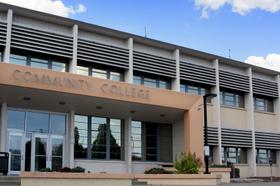When community colleges partner with businesses in the community, it can benefit students and residents alike. Never has that been more true than at Cape Cod Community College, where the dental hygiene program meets a need for dental care in surrounding communities, as well as employment opportunities for the students that complete the program. Recently, the school received a huge boost to its program capabilities, thanks to a generous gift from a single benefactor and the help of at least one business in the community.
Cape Cod Community College’s Dental Hygiene Program
According to the Barnstable-Hyannis Patch, the fully accredited dental hygiene program at Cape Cod Community College is the only one of its kind within a 50-mile radius. Currently, the competitive program boasts a large training area filled with 14 dental chairs and a bevy of dental tools students will need to learn how to use to work in their chosen field. Manning those chairs are 42 students each year, preparing for lucrative, stable positions within the dental industry. Students run the gamut from high school graduates moving directly into the program to older adults looking for a career boost or change.
While the school’s program is well-acclaimed within the dental community, the college also knows it could be doing much more to serve those in surrounding areas with high-quality dental care. More students could be trained if the facilities could be expanded to accommodate additional classes. Also, in light





















